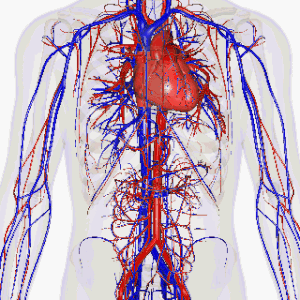Vascular disorders
| Vascular disease | |
|---|---|
 |
|
| Veins and arteries | |
| Classification and external resources | |
| Specialty | angiology |
| ICD-10 | G45-G46, I60-I95 |
| ICD-9-CM | 325, 430-459 |
| MeSH | D014652 |
Vascular disease is a class of diseases of the blood vessels – the arteries and veins of the circulatory system of the body. It is a subgroup of cardiovascular disease. Disorders in this vast network of blood vessels, can cause a range of health problems which can be severe or prove fatal.
There are several types of vascular disease, (which is a subgroup of cardiovascular disease), the signs and symptoms depend on which type, among them are:
Vascular disease is a pathological state of large and medium muscular arteries and is triggered by endothelial cell dysfunction. Because of factors like pathogens, oxidized LDL particles and other inflammatory stimuli endothelial cells become active. The process causes thickening of the vessel wall, forming a plaque that consists of proliferating smooth muscle cells, macrophages and lymphocytes. The plaque results in a restricted blood flow which will decrease the amount of oxygen and nutrients that reach certain organs, the plaque might rupture causing the formation of clots.
It can be difficult to make a Vascular disease diagnosis since there are a variety of symptoms that a person can have, also family history and a physical examination are important. The physical exam may be different depending on the type of vascular disease. In the case of a peripheral vascular disease the physical exam consists in checking the blood flow in the legs.
...
Wikipedia
